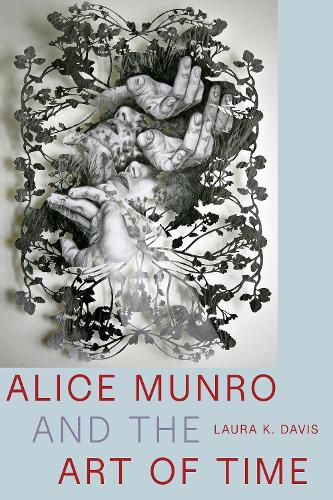Readings Newsletter
Become a Readings Member to make your shopping experience even easier.
Sign in or sign up for free!
You’re not far away from qualifying for FREE standard shipping within Australia
You’ve qualified for FREE standard shipping within Australia
The cart is loading…






In Alice Munro and the Art of Time, Laura K. Davis demonstrates how one of the world's greatest writers of short stories challenged and reconfigured traditional assumptions about time. In chapters that analyze selected stories and collections from across Munro's career, Davis examines the formal and conceptual function of temporality in Munro's oeuvre, considering the relationship between the past and the present, material experiences of being, story structure, memory, and memoir. While place has been considered extensively by scholars of the Nobel-Prize-winning author's work, time has not been given equal attention, until now. Clear and compelling interpretations of Munro's stories offer insights into her writing process, her representations of character and setting, and the complexities of her narrative techniques-which often evade linearity and chronology, emphasizing, instead, revision, repetition, and the body. By highlighting the connections between time and various tropes in Munro's work, including identity, ephemerality, and environmental change, this study provides new, exciting avenues for engaging with Munro's work. As Davis reveals, Munro's intricate narrative structures resist dominant conceptions of time and instead epitomize a complex, diverse understanding of life, often centering women's knowledge while simultaneously foregrounding the possibilities and necessity of performativity, inclusion, and change.
$9.00 standard shipping within Australia
FREE standard shipping within Australia for orders over $100.00
Express & International shipping calculated at checkout
In Alice Munro and the Art of Time, Laura K. Davis demonstrates how one of the world's greatest writers of short stories challenged and reconfigured traditional assumptions about time. In chapters that analyze selected stories and collections from across Munro's career, Davis examines the formal and conceptual function of temporality in Munro's oeuvre, considering the relationship between the past and the present, material experiences of being, story structure, memory, and memoir. While place has been considered extensively by scholars of the Nobel-Prize-winning author's work, time has not been given equal attention, until now. Clear and compelling interpretations of Munro's stories offer insights into her writing process, her representations of character and setting, and the complexities of her narrative techniques-which often evade linearity and chronology, emphasizing, instead, revision, repetition, and the body. By highlighting the connections between time and various tropes in Munro's work, including identity, ephemerality, and environmental change, this study provides new, exciting avenues for engaging with Munro's work. As Davis reveals, Munro's intricate narrative structures resist dominant conceptions of time and instead epitomize a complex, diverse understanding of life, often centering women's knowledge while simultaneously foregrounding the possibilities and necessity of performativity, inclusion, and change.